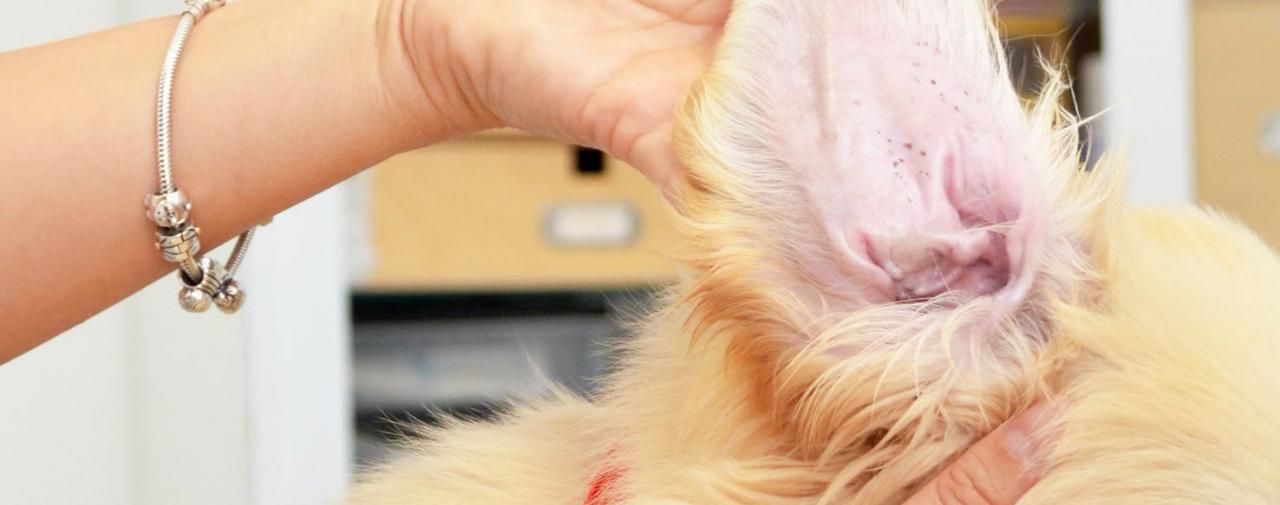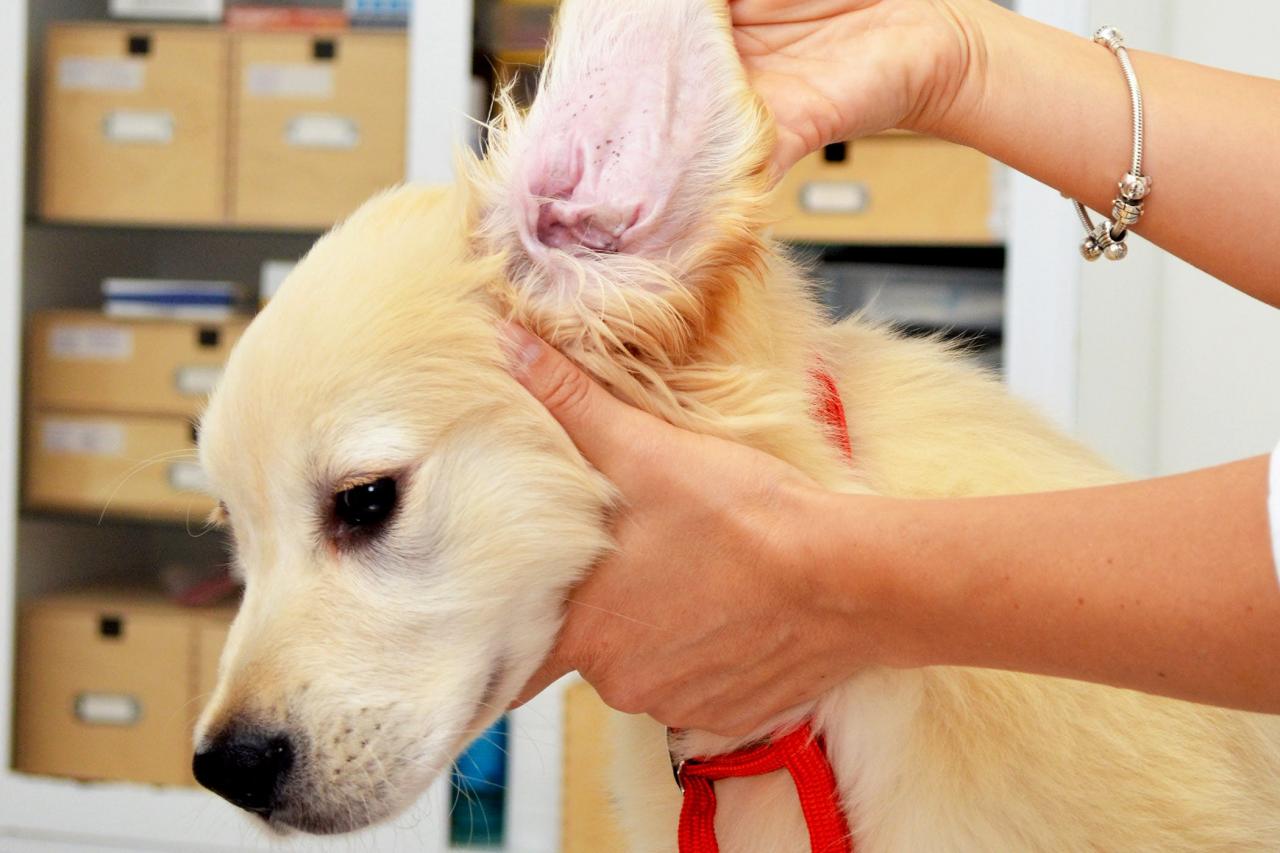Dogs are a trendy choice as pets; after all, we love these cute and furry creatures. They are loyal, fiercely independent, and curious, and require minimal care; thus, they are rightly known as man’s best friend!
If you have ever petted a dog or already have one at your place, you would have often observed your dog scratching and shaking its head more than usual. And we know how much you hate it! The constant scratching and shaking aren’t just inconvenient and dangerous for us, but no one who truly loves their dog can see them in such an uncomfortable situation.
So what causes this scratching? Ear Mites! Yes, these tiny Ear mites are the main culprit that’s making your furry friend’s life miserable. Well, these ear mites are tiny arachnids that consider the wax and oils in your dog’s ear canal as a treat, and cause severe itchiness that your dog will hate!
What’s more unfortunate? These tiny ear mites are highly contagious! Yes, if one of your pets is having ear mites, then most likely, your other pets will also get it. However, the good news is that motes are unable to burrow deep into the ear canal. As a result, its treatment is relatively simple.
But to clearly understand and carry out the treatment for eliminating ear mites, it’s foremost significant to understand what causes these disgusting mites. Therefore here we have discussed this query in detail to help every dog owner out there!
What are Ear Mites?

Ear mites are these tiny insects similar to ticks, barely visible with a naked eye, and can live in both -ear canal and the skin. As mentioned above, these mites have a minimal lifespan; therefore, they are always looking for a host to survive on. Consequently, they are extremely contagious, jumping from dog to dog, or even cats. Plus, if you see them with a magnifying glass, you’ll see eight legs; hence, they are classified as arachnids.
Usually, two species of ear mites may infect ears, namely Otodectes and Notoedres. To be specific, Otodectes infect a diverse range of animals, including dogs, cats, foxes, and ferrets, while Notoedres infect cats, including both skin and ear canal. With that, another type of mite called Demodex, which may cause a skin infection around the ears; however, Demodex doesn’t infect the ear canal.
Symptoms of Ear Mites
Ear Mites are among the most irritable creatures; thus, one of the most prominent symptoms that come with it is itching. If your dog is scratching his head obsessively, then it’s time for you to get serious. Not just that, some of the dogs with ear mites scratch themselves so vigorously that they end up having small scabs and cuts inside and around their ears. This is the most common and prominent sign of ear mite infestation, most likely visible at the bottom of the ear. You may also observe that at times, your dog would avoid his ears and instead use a carpet, mat, or similar items for scratching itself.
Pro tip: As soon as you see a wound/scab around the ears, quickly get it treated at your place or visit a vet, as open wounds can easily cause bacterial infections.
Another major symptom of ear mites is the dark-colored (mostly reddish-brown) discharge from the ear lobes of your little friend. This discharge is composed of dried-out blood and may resemble coffee beans.
Although all the symptoms mentioned above are of ear mite infestation, yet these symptoms are pretty common for most parasitic infections. Thus, it’s highly recommended to consult an expert vet for diagnosing ear mites, unless you are 100% sure!
So what causes Ear Mites?

Ear Mites are contracted from the environment your furry fellow lives in. Dogs that have regular physical contact with other animals or those who spend most of their time outdoors can easily contract these contagious mites.
Those who remain outdoors mostly, but dogs that share a bed or sleep with other pets in the home, including both cats and dogs, these disgusting mites can be easily transferred from one fellow to another. Ear mites in dogs are also pretty common at places where they are kept close, including veterinary offices, boarding facilities, shelters, or breeding centers. Often these mites get attached to your furry bundle of love when they pass through heavily grassed or wooded areas. Plus, these mites can also be transported by loose hairs fallen on the ground, after an infected pet shakes his head.
Once your pup has caught even a single mite, a full-fledged infestation may occur rapidly. In particular, female mites can conveniently lay up to 5 eggs a day, ready by day four. Once these eggs are hatched, the tiny mite is already ready to feed onto the wax and make the condition worse.
Diagnosing the infestation
The severity of symptoms of Ear mite infestation would clearly hint to your vet regarding your dog’s condition. Your vet may make a diagnosis by observing and examining the discharge from your pet’s ear via an Otoscope or by microscope. These magnifying apparatuses are specifically used as ear mites are not visible to the naked eye. In case the ears are extremely sore, the vet may require sedating the ears for vivid examination. After diagnosing, your vet may recommend a topical medicine or ointment along with an antibiotic based upon the severity of symptoms.
Pro tip: While visiting a vet, get all your pets checked together for ear mite infestation to avoid further spreading. Plus, you should also get any toys, mats, or surfaces that came in contact with the pet thoroughly cleaned in hot water.
Prevention and Treatment

Your vet will begin with the treatment by thoroughly cleaning the dog’s ear to remove any signs of mites. With that, you’d be required to apply topical anti-parasitic ointments regularly inside the ear canal of your dog for at least a few weeks. Besides, products such as selamectin and moxidectin/imidacloprid are also widely suggested by veterinarians for application. However, if an infected wound has developed around the ears due to excessive scratching, certain procedures may also be performed.
In case the infestation is too advanced, you may also be recommended a certain antibiotic to control the development of this parasite. Plus, nowadays, vets provide anti-parasitic ear drops that are extremely convenient to use.
An important aspect to comprehend here is that you must follow your vet’s guidelines and recommended time for optimal results of the treatment. Often individuals stop the treatment once their dog stops scratching; however, the eggs of ear mites are not eliminated. As a result, the infestation develops again in a matter of only a few days.
As far as the prevention is concerned, you’d have already got it by this point. The ideal approach to prevent ear mite infestation is to keep your pet distant from infested pets and thoroughly bath it after it comes from outdoors or after having physical contact. Plus, try keeping the ear canals of your dog free from debris and vax by a good cleanser, as the mites feed on to these only.
Frequently Asked Question (FAQs)
(Q1)Can you use essential oils as an ear drop?
(Ans) Home remedies are beneficial in treating ear mites; therefore, it’s often recommended to use cooking oil or olive oil as it helps to suffocate these nasty critters and easily rinses out the debris. Plus, if you add cloves of heated garlic, the infestation will be rapidly reduced as garlic has antibacterial properties.
(Q2) How long may it take to get rid of ear mites?
(Ans) Fortunately, ear mites have a short life cycle of 3 weeks; thus, within a matter of a few weeks, they would be eliminated. Medication can kill mature mites; however, to eliminate eggs as well, you’d need to be patient for the medicine to be effective.
(Q3) Can I use Peroxide to kill Ear Mite?
(Ans) No, veterinarians strictly instruct to avoid using Peroxide and hydrogen peroxide to irritate within the ear canal, making the condition worse. Instead, only use a vet-recommended gentle cleanser.
Conclusion
Concluding the above topic, we’d say that ear mites are natural and can be contracted to any dog put there. But luckily, by knowing the right reasons and treatment, you can quickly eliminate this nuisance and make your furry bundle of love comfortable again. It isn’t that these ear mites will disappear immediately, but with a little bit of patience and the right treatment, you will see the results.
We hope this article clears out all your queries, and in case of any confusion, do let us know. We’d be obliged to help you in this respect.
